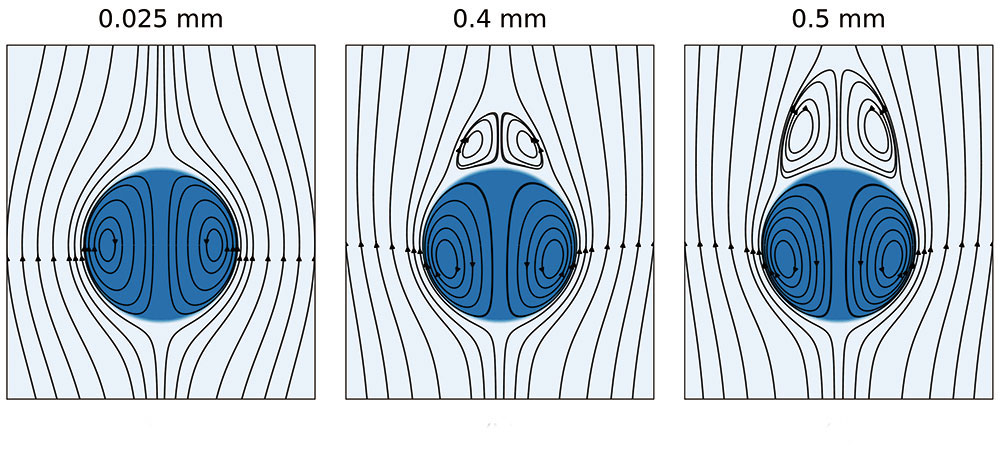Disclaimer: machine translated by DeepL which may contain errors.
Falling Raindrops and the Earth's Climate
Yusuke Miura( Associate Professor, Department of Earth and Planetary Science) |
Jiarui Wang( Project Researcher, Department of Earth and Planetary Science) |
Makoto Koike, Associate Professor, Department of Earth and Planetary Science |
![]()
The fall of raindrops affects the Earth's climate. Is this a bit of an exaggeration? In fact, weather forecasts are accurate enough (?) for practical use without considering each raindrop. In fact, weather forecasts are accurate enough (?) for practical use even without considering each raindrop. Weather forecasts are based on numerical calculations of atmospheric models (discretizations of hydrodynamic, thermodynamic, optical, and other equations), but even petaflops supercomputers cannot adequately represent individual raindrops or even turbulence (e.g., the wispy shapes of clouds). Weather seems to be determined by atmospheric motion on a macroscopic scale. But what about the earth's climate, which is on a more macroscopic scale than weather?
As is well known, the earth's climate is kept at a temperature suitable for human life thanks to greenhouse gases. The greenhouse gas that has the greatest influence on climate is probably carbon dioxide, which stays in the atmosphere for a long time. Water vapor, on the other hand, stays in the atmosphere for a shorter time, but has a greater greenhouse effect and warms the earth's surface more than carbon dioxide. Water vapor evaporates from oceans and lakes and is removed from the atmosphere by precipitation. For weather, it is a question of when and where rain falls, but for climate, it is the average distribution of water vapor that matters in determining the greenhouse effect.
The distribution of water vapor at the scale of climate is determined as a result of various processes so that the Earth's energy budget fits. For example, water vapor, water, and ice change phase within clouds. Air inside and outside clouds mixes. Clouds that have finished precipitating evaporate and disappear. Not only do individual clouds exist, but they sometimes develop typhoon-like structures. Raindrops evaporate and moisten the atmosphere as they fall through dry air, absorbing heat and cooling the atmosphere in the process. Raindrops contribute to the distribution of water vapor on a climatic scale.
Now, atmospheric models cannot represent individual raindrops. Therefore, the macroscopic rainfall velocity (rather than raindrops) is given by an empirical equation based on experimental data. However, even with the world's fastest supercomputer "Fugaku," the setting of the rainfall rate can change the result of global warming prediction. As a first step to overcome this difficulty, we have developed a method to numerically calculate the interior of raindrops and atmospheric flow simultaneously for raindrops falling while deforming, based on the fundamental equations (Figure). We have made various improvements to the embedded boundary method, such as using a discrete delta function that preserves the non-rotational structure to represent the raindrop surface probabilistically and eliminating the false flow that has been a problem with conventional methods. The widely used empirical equation was verified using numerical calculations as reference values and found to have large errors when the atmospheric pressure and temperature deviated from the environment in which the experimental data were obtained. Therefore, we proposed a more general empirical formula for raindrop velocity.
 |
|
| Figure: Water and air flow (streamlines) inside and outside falling raindrops of 0.025 mm, 0.4 mm, and 0.5 mm in diameter (shown in dark blue). When the diameter is small, the air flow only goes around the raindrop, but as the diameter increases, the flow becomes more complex and vortexes are created above the raindrop. | |
In global cloud-resolving models, which are expected to be applied to climate prediction in the near future, cloud microphysical processes, which describe the macroscopic behavior of water substances (rather than raindrops), affect the distribution of water vapor on a climate scale. While more realistic numerical simulations must overcome the challenges of large raindrops with chaotic motion and multiple raindrops colliding and merging, this study represents a pioneering new stream of fundamental equation-based numerical simulations to improve the estimation of cloud microphysical process parameters.
The results of this research have been published in C. R. Ong et al.
Published in the May 2021 issue of Faculty of Science News
Communicating to Faculty Research Students >



